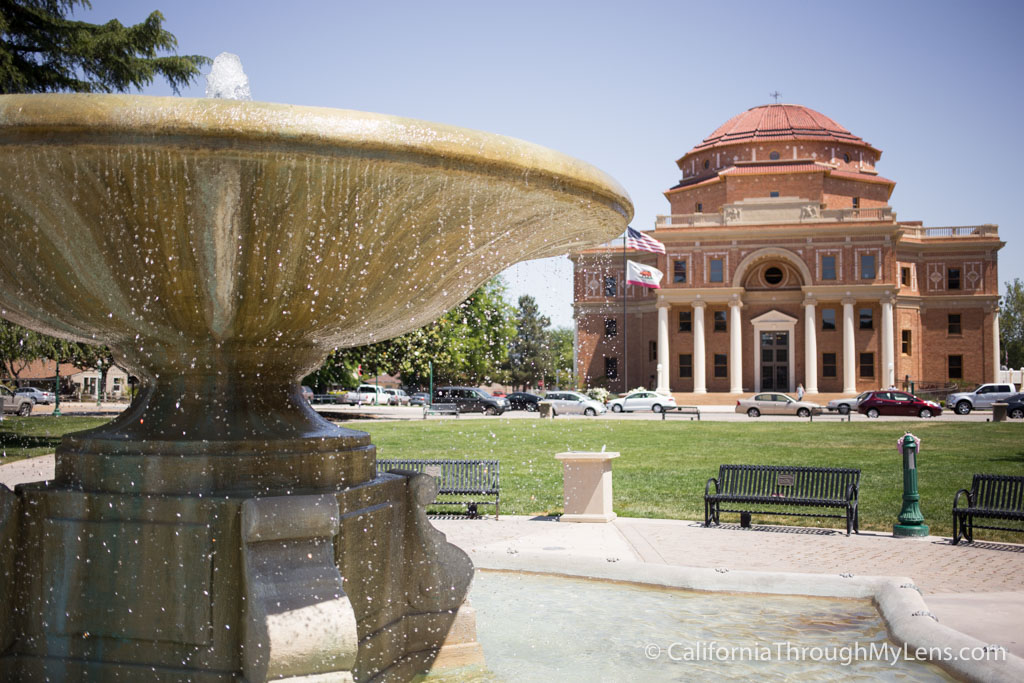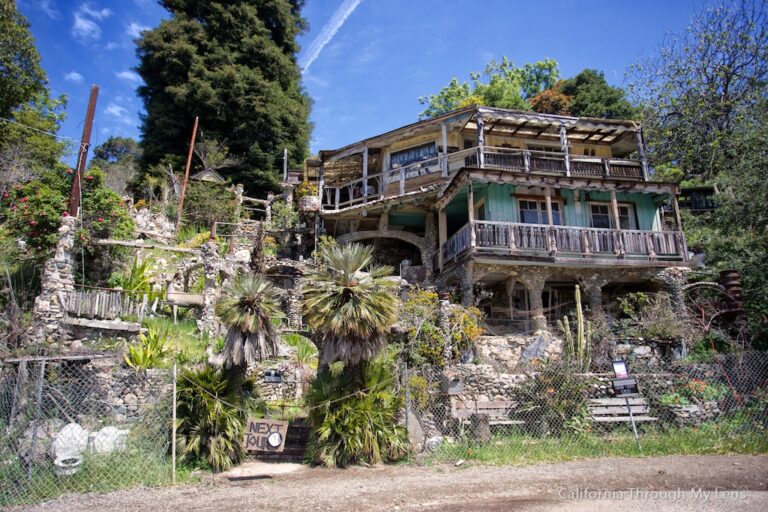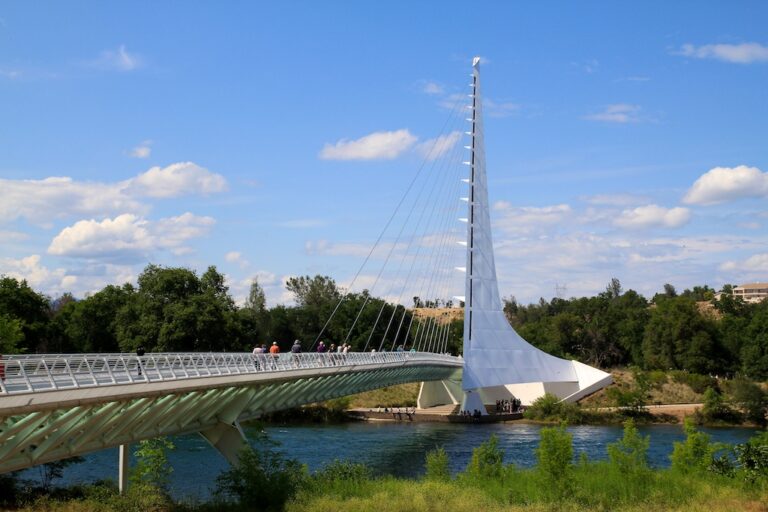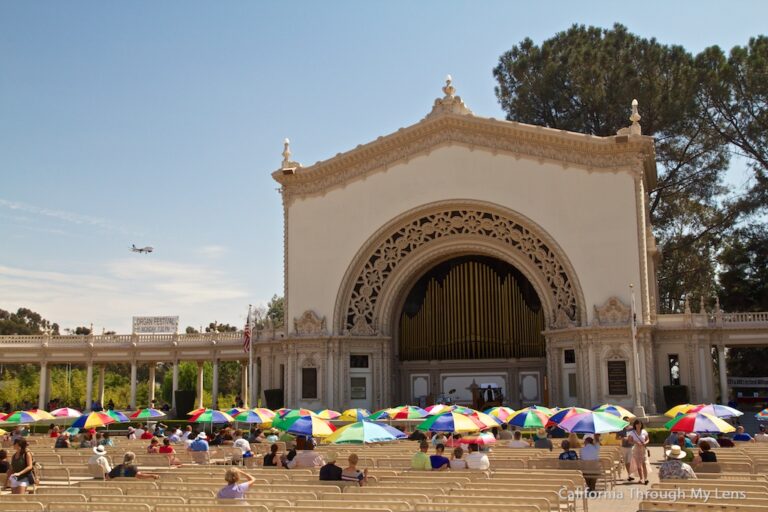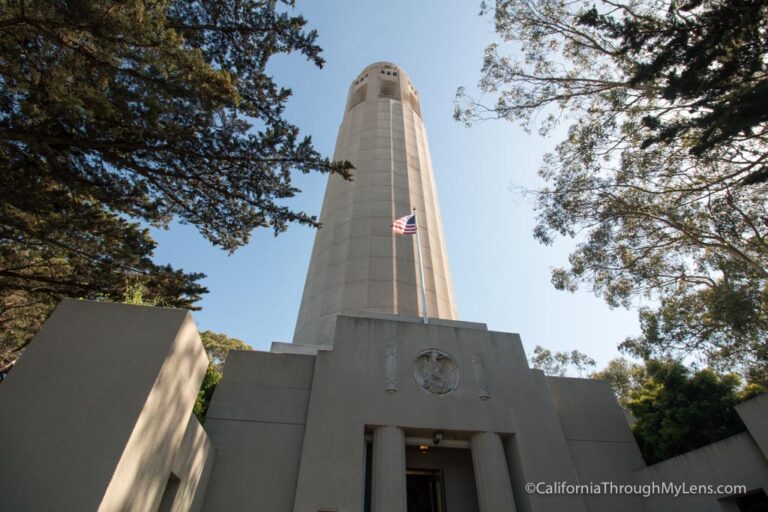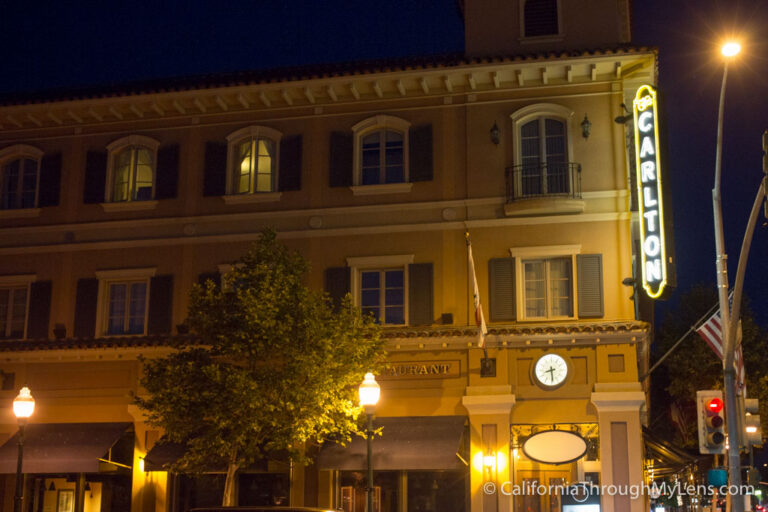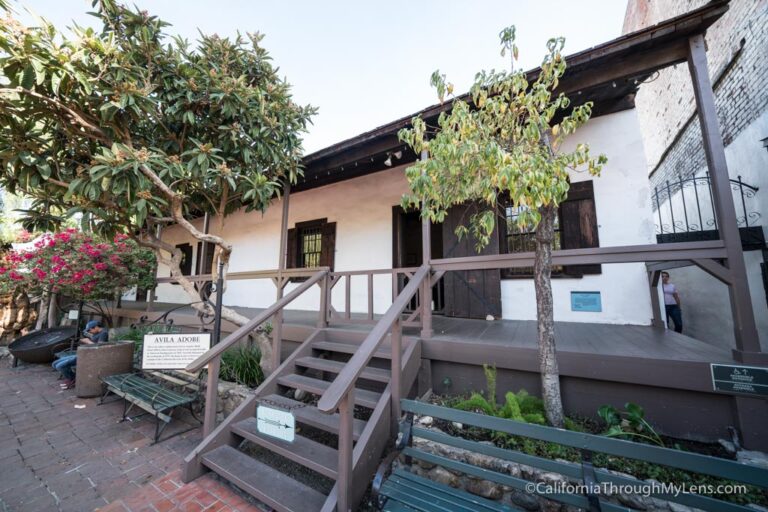Atascadero City Hall: A Beautiful & Historic Central Coast Building
When you drive through Atascadero, one of the spots that is sure to catch your eye is the historic city hall building. This structure, from 1918, is one of the most beautiful old buildings on the California coast (minus Hearst Castle). It has an intriguing history that spans almost a full century, and exploring the building and the park connected to it is a great way to spend a few hours in the city. Here is all the information.
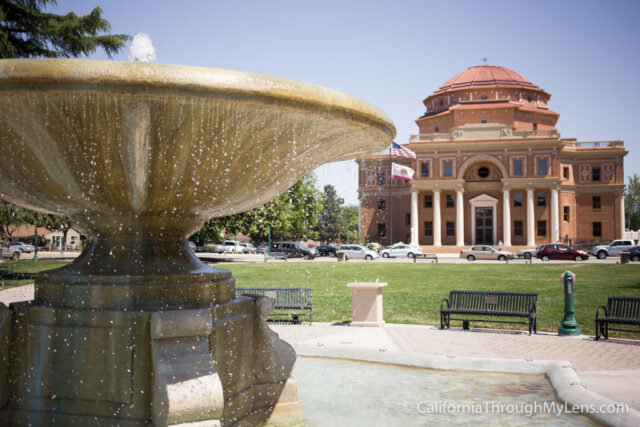
Details
- You can call the historical society in advance to set up a tour, but planned tours typically happen on Wednesday and Friday.
- You can walk into the first floor where they have a few rooms of historical artifacts and information about the building any time it is open.
- Location: 6500 Palma Ave, Atascadero, CA 93422
- This information is from my visit in 2016
History
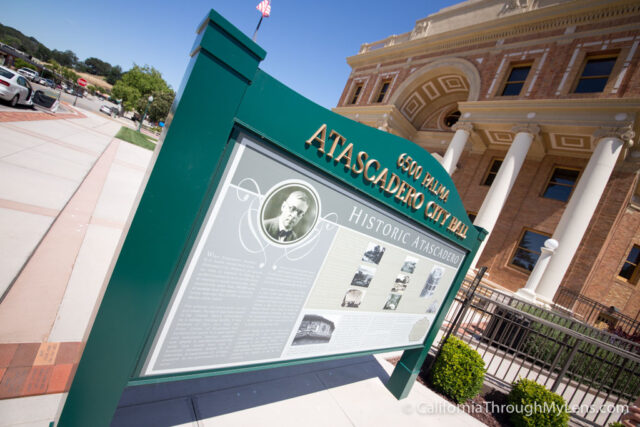
Below is a brief synopsis but you can read all of the history here:
Edward Gardner Lewis, a magazine publisher from the east, founded Atascadero in 1913. The centerpiece of EG Lewis’ planned community was an Italian Renaissance-style building, which became home to Atascadero City Hall and the city museum. Constructed between 1914 and 1918 with bricks made from local clay, this uncommon building has become one of California’s Historical Landmarks (No. 958). Designed by Walter D. Bliss of San Francisco, construction was completed in 1918 at the cost of $180,000. It was damaged in the 2003 earthquake, and after significant upgrades and renovations, the building was re-opened in August 2013.
The Tour
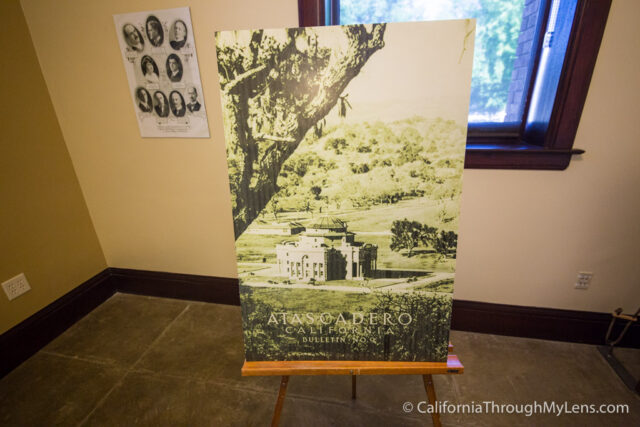
I went on a tour with a docent from the historical society named Len. He was fantastic and incredibly knowledgeable about the building’s unique history. We explored the building for about an hour and a half, learning all about the city, EG Lewis, and the building itself. Here are a few of the highlights, but to fully understand the area, be sure to take a tour for yourself.
First Floor
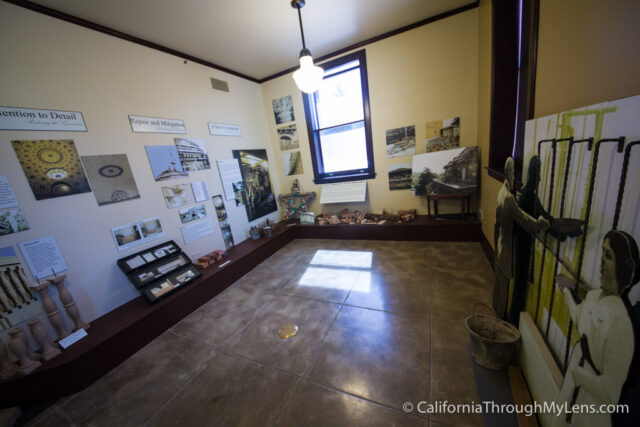
This floor is open to the public even without a tour, and it consists of two main rooms with different exhibits in them. The exhibits talk about EG Lewis, the tent city that was created while the town was being built, and the restoration process after the earthquake.
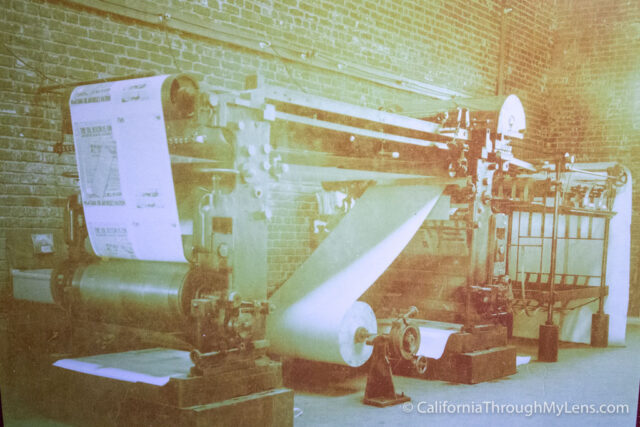
There is also an area that talks about the printing industry that Edward created, which was more significant than Hearst’s print empire at one time.
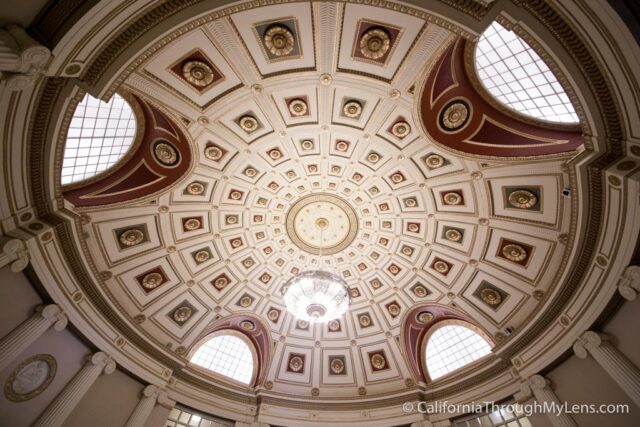
The first floor is also a great place to see the central rotunda that is now the ceiling of the city hall offices. It was beautiful and worth visiting just by itself.
Second Floor
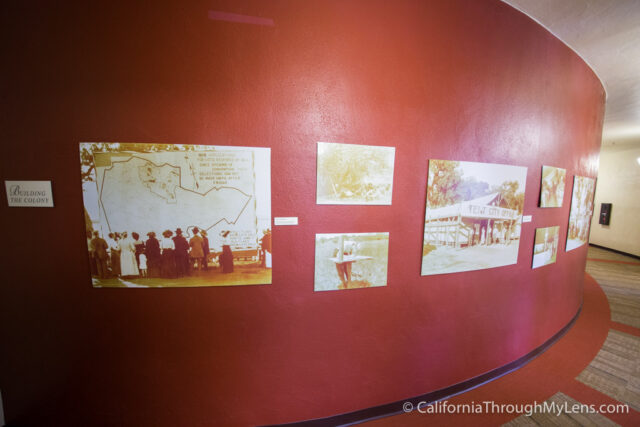
From there, the tour headed to the second floor, and we walked a circular path around the building to see the different historical images they had on the walls. These told the story of the city’s creation, and of the area; they were fascinating.
Third Floor
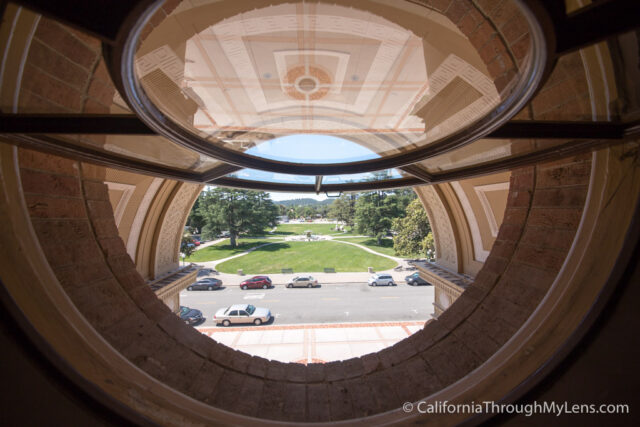
On this floor, we saw more historical photographs as well as views out the windows down to the gardens.
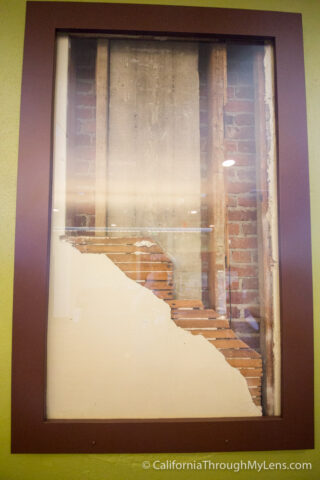
One of the rooms on this floor showcases the way the original building was constructed before the earthquake, and I found that to be a great way to understand the construction process of the early 1900s.
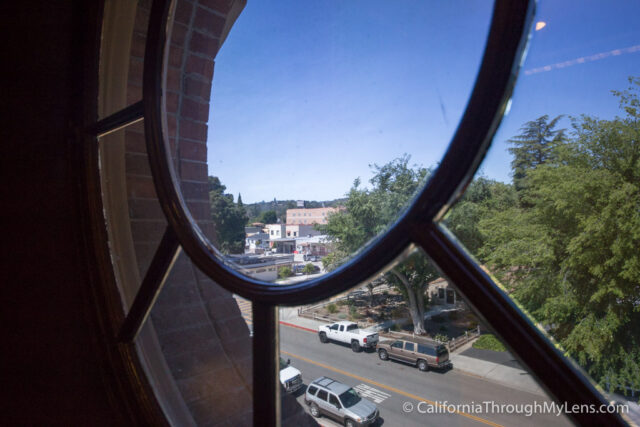
They also had a few windows that revolved on pins, and that let in the air from the outside. These windows can be seen when you are looking at the building’s exterior.
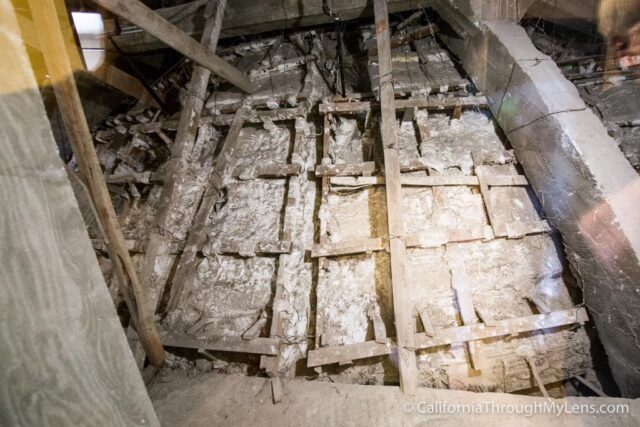
Lastly, there was an area on this floor that let us see the rotunda from the other side. You can only look through a window at it, but I was surprised that it was still held up based on the way it looked from this angle. It gave me more appreciation for the way it was built.
Fourth Floor
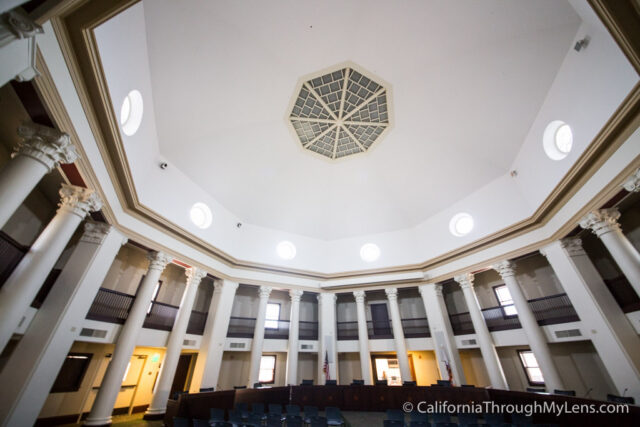
This floor brings you to the second rotunda in the building. It is a beautiful spot that can be rented out for parties and events.
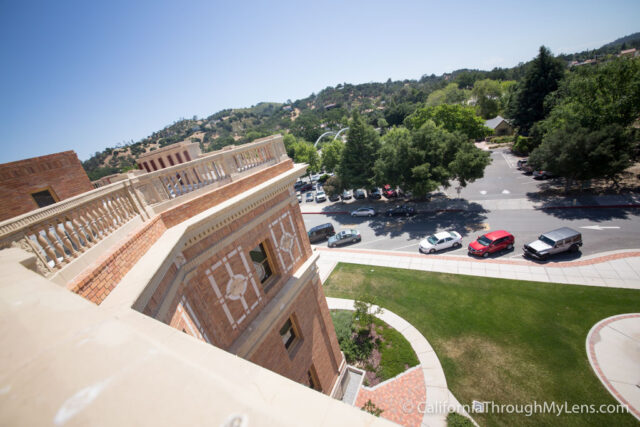
Depending on what is going on, you may be able to walk out on the small roof area of the building. This does not always happen on tours though, as this is a working building, and there are still meetings and events happening.
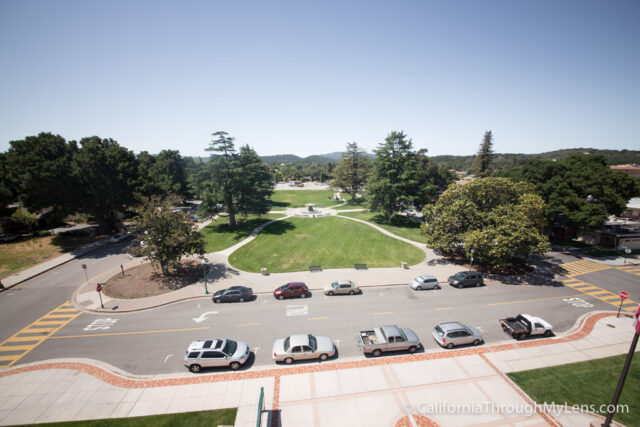
On our tour, we walked out on the small roof though, and got to see a few lovely views of the gardens below. It was a great way to end our tour. Big thanks to Len for providing such a fabulous, historical insight into the building and the town.
The Exterior
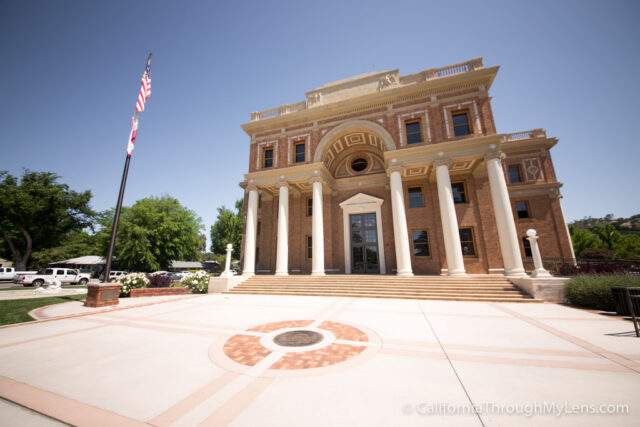
After walking back out of the building, I took some time to walk around the exterior.
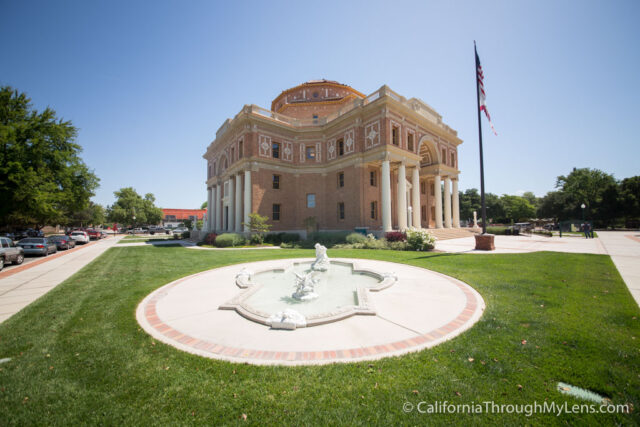
There are four historic fountains at each corner of the building that were also recreated when the building went through restorations.
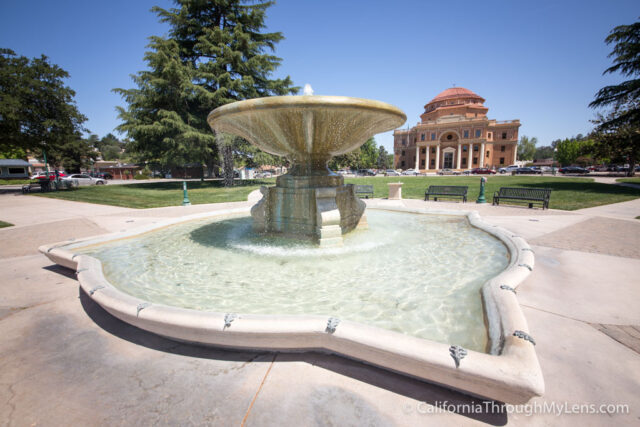
Along with that, there is a large fountain right in the middle of the garden that provides a great vantage point to take photos with the fountain and the building behind it.
I spent a good 2 hours here while I was visiting the city, and I was impressed with how well they had restored the city hall and how beautiful it was. No visit to Atascadero is complete without visiting it. If you are spending some time in the city, check out my weekend itinerary here as well.

